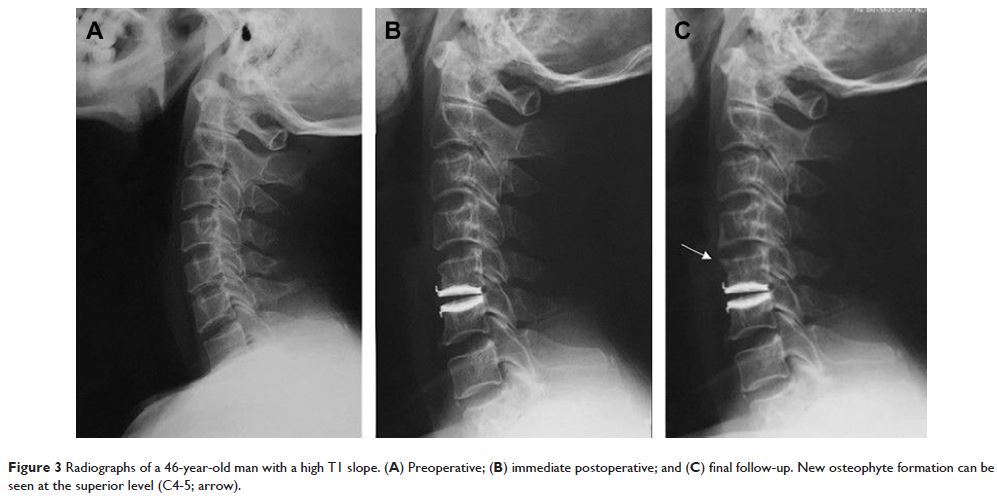109229
论文已发表
注册即可获取德孚的最新动态
IF 收录期刊
- 3.4 Breast Cancer (Dove Med Press)
- 3.2 Clin Epidemiol
- 2.6 Cancer Manag Res
- 2.9 Infect Drug Resist
- 3.7 Clin Interv Aging
- 5.1 Drug Des Dev Ther
- 3.1 Int J Chronic Obstr
- 6.6 Int J Nanomed
- 2.6 Int J Women's Health
- 2.9 Neuropsych Dis Treat
- 2.8 OncoTargets Ther
- 2.0 Patient Prefer Adher
- 2.2 Ther Clin Risk Manag
- 2.5 J Pain Res
- 3.0 Diabet Metab Synd Ob
- 3.2 Psychol Res Behav Ma
- 3.4 Nat Sci Sleep
- 1.8 Pharmgenomics Pers Med
- 2.0 Risk Manag Healthc Policy
- 4.1 J Inflamm Res
- 2.0 Int J Gen Med
- 3.4 J Hepatocell Carcinoma
- 3.0 J Asthma Allergy
- 2.2 Clin Cosmet Investig Dermatol
- 2.4 J Multidiscip Healthc

Bryan 人工颈椎间盘置换术后,T1 斜角对因手术造成的邻近段退化的影响
Authors Yang P, Li Y, Li J, Shen Y
Received 6 April 2017
Accepted for publication 7 August 2017
Published 29 August 2017 Volume 2017:13 Pages 1119—1125
DOI https://doi.org/10.2147/TCRM.S138990
Checked for plagiarism Yes
Review by Single-blind
Peer reviewers approved by Dr Hoa Le
Peer reviewer comments 2
Editor who approved publication: Professor Deyun Wang
Background: This
retrospective study investigated an association between preoperative T1 slope
and surgical and adjacent segment degeneration (SASD) after Bryan cervical disc
arthroplasty (BCDA) in patients with cervical degenerative disc disease.
Methods: Based on preoperative standing lateral radiographs, 90 patients were
classified according to T1 slope that was higher or lower than the 50th
percentile (high T1 or low T1, 28 and 62 patients, respectively). Patients were
also classified as SASD or non-SASD (38 and 52 patients, respectively)
determined by radiographs at final follow-up. Visual analog scale (VAS) and
Neck Disability Index (NDI) scores for neck and arm pain were noted, and changes
in the sagittal alignment of the cervical spine (SACS), functional spinal unit
(FSU) angle, and FSU range of motion (ROM) were also noted. Univariate and
multivariate logistic regression analyses were performed to determine the risk
factors for SASD.
Results: The overall rate of SASD was 42.2% (38/90). The SACS, FSU angle, FSU
ROM, and SASD rates of the high T1 and low T1 slope groups were significantly
different at the last follow-up. The NDI and VAS scores of the high T1 slope
group were significantly greater than those of the low T1 slope. The
multivariate logistic regression analysis showed that high T1 slope and
endplate coverage discrepancy (ie, residual space behind the prosthesis) were
significant risk factors for SASD after BCDA.
Conclusion: High T1 slope and endplate coverage discrepancy were associated
with SASD after BCDA. Patients with a high preoperative T1 slope have a smaller
FSU angle and more neck pain after BCDA.
Keywords: Bryan cervical disc arthroplasty, surgical and adjacent segment degeneration,
T1 slope, endplate coverage discrepancy, risk factor, clinical outcomes
